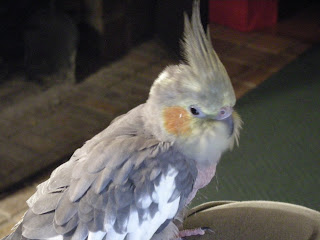Did I mention?


(Schacht Hi-Lo, 1.1 oz. I teach low-whorl because that's how my teacher started me, and what was good enough for half a dozen 10 year olds once upon a time is good enough for any collegiate whippersnapper.)
a blog of feminine wiles
 from previous claimants. I tried to drown out the worms a couple of days before using the fruit, but that only worked on three or four worms. (Not worth it, I've decided. I just lose the use of my sink and get the heebie-jeebies from seeing worms hanging half out of the quince.) (Bleargh.)
from previous claimants. I tried to drown out the worms a couple of days before using the fruit, but that only worked on three or four worms. (Not worth it, I've decided. I just lose the use of my sink and get the heebie-jeebies from seeing worms hanging half out of the quince.) (Bleargh.) Oh-- and sugar. Lots of sugar. More sugar, in fact, than I had left after assorted baking projects and the Pocket Linguist's batches of sorbet (spicy chocolate) and ice cream (vanilla buttermilk, mmmm). This year's jam is, perhaps, a wee bit on the sour side. Maybe just a little. Still, I can assure you that it is very tasty with ice cream, in yoghurt, and on slices of brown soda bread, and I fully expect it to be delicious as a filling for sandwich cookies. Hmmm... quince macarons, anyone?
Oh-- and sugar. Lots of sugar. More sugar, in fact, than I had left after assorted baking projects and the Pocket Linguist's batches of sorbet (spicy chocolate) and ice cream (vanilla buttermilk, mmmm). This year's jam is, perhaps, a wee bit on the sour side. Maybe just a little. Still, I can assure you that it is very tasty with ice cream, in yoghurt, and on slices of brown soda bread, and I fully expect it to be delicious as a filling for sandwich cookies. Hmmm... quince macarons, anyone?

"In the first thirteen episodes, Schwartz has already included a pregnancy scare, a marriage proposal, an attempted rape, a lost virginity, a near-deadly accident, a divorce, a suicide attempt, multiple thefts, blackmail, a drug addiction, a threesome, at least two counts of breaking and entering, and an eating disorder."
The Genius of Gossip Girl
 Rolags of mystery brown wool (not v. soft), mystery white wool (rather soft), and pink merino rescued from a former life as intestines (quite soft).
Rolags of mystery brown wool (not v. soft), mystery white wool (rather soft), and pink merino rescued from a former life as intestines (quite soft). Not pictured: the impressive array of standard yarn weights achieved in each spindleful. It was teach-yourself-long-draw week chez detritus. Results have been, shall we say, mixed.
Not pictured: the impressive array of standard yarn weights achieved in each spindleful. It was teach-yourself-long-draw week chez detritus. Results have been, shall we say, mixed.
